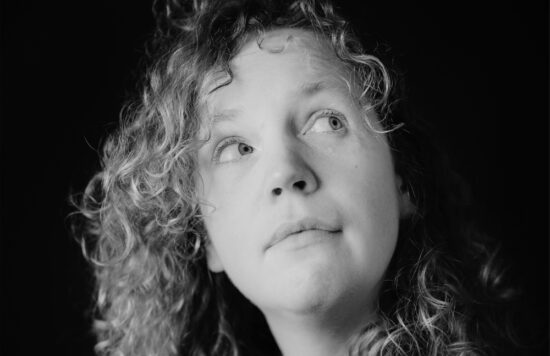


What I Learnt From Taking My Character to Therapy
6 minutes read
A couple of years ago, I was sitting in my first proper meeting with my new editor. So far the notes had been constructive and clear and I was feeling prepped and ready to head into the next draft (there had also been cake, which definitely helps). But then there was a big one: ‘I don’t think we get a clear enough sense of Amber’s character.’
On the surface, that maybe wasn’t such a bad thing – in the novel (The Tall Man), Amber, eighteen, is the focus of a true crime documentary, having recently been acquitted of murder. The film crew following her around don’t fully understand her either, and she’s been portrayed in the media as both evil and a victim. But the problem my editor had picked up on was that I didn’t yet know which I felt she was, and that was coming through in the way she behaved on the page. She didn’t feel consistent or believable enough.
Conveniently, I’d recently had another meeting with a colleague about a service she was trialling – Characters on the Couch, where she’d combine her editorial and psychotherapy expertise and let writers bring their characters into her therapy room. So I promptly volunteered myself.
The colleague was Arabel Charlaff, an experienced psychotherapist and editorial consultant (and now Academy tutor), and I arrived at her office one morning, dressed as instructed in an outfit I thought Amber might have chosen (optional, but I thought: in for a penny). I’d sent Arabel some information about Amber beforehand – how old she was, her current living situation, and whereabouts in the story we were meeting her (I chose to be Amber at sixteen, before the murder has happened).
Once we sat down, I was Amber. Arabel talked to me as she would any new client she was meeting for the first time, asking me questions about myself, gently getting me to expand on things she thought were interesting or important. We talked about “my” family, about how I was feeling. We talked about the friendship group “I” had and how my relationships within it had begun to mimic the ones I had at home (an insight I found so interesting I almost broke character and ran home to start writing). The time, which I’d worried I’d struggle to fill (since we weren’t talking about the bit of Amber’s arc I thought had the majority of story material, the murder), flew by.
It was one of the most useful hours I’ve ever spent on my writing, and here’s what I learnt:
Roleplay as your character
This was the element I was least looking forward to. I’m not an actor and I was worried I’d just feel silly. But it was incredibly useful to physically step into Amber’s shoes (grey suede trainers; totally impractical and previously gathering dust in my wardrobe) for an hour. There’s a subtle but significant difference in saying ‘I’ rather than ‘they’ when talking about backstory and emotion. By pushing myself closer to those experiences of Amber’s, rather than examining them clinically from my own position outside of the story, it was easier to think about how they were influencing the way she spoke, thought and behaved.
Arabel did a brilliant job of making me feel unselfconscious (it was actually a little scary how easy it was to pretend to be a teenage murderer for an entire hour). If you have a friend – another writer, maybe, or an actor – who’ll be able to play along in the same way, give it a try! Alternatively – and I appreciate this increases the feeling-silly factor – I’m a big fan of talking to myself. Imagine you’ve asked the character a question – and respond as them. Try and get a feel for the way they speak; the parts they hesitate over, the words they choose, the things they lie about or try to spin.
You can try writing too – diary entries or emails/letters, or try transcribing an imaginary interview with them. But think about physically occupying your characters too – imagining how they move around a room, how they sit, whether they fidget or whether they’re completely confident in that particular space.
How does their past play into their present?
We all know that characters need a history, and that part of our job as writers is to convey that history in a way that sheds light on the plot. But it’s often not enough to simply reverse engineer backstory to make a plot make sense (eg she’s a murderer so something really bad must have happened in her childhood or He’s afraid of commitment so must have attachment issues because of his upbringing). Readers require more emotional intelligence than this when it comes to characters we believe in and remember.
It’s important to think about smaller ways in which the places we’ve come from and the things we’ve been through show themselves. If your character has problems with attachment, consider the other facets of their personality that might have developed because of (or in spite of) that, rather than simply the part of the story that requires it. We are all the sum of many mental and emotional parts, and characters are much richer, more convincing, if backstory feels true to the version of them we see now, rather than tacked on as an explanation for something.
Think about their relationships
One of the most useful things for me was the questions Arabel asked Amber/me about the people in her life. I already knew a lot about her parents – it’s key to the plot of that novel. But when it came to widening the circle, I hadn’t given much thought to the more minor characters – her friends, the guy she starts seeing – other than the parts they would play in the plot. Our conversations made me consider why those people were in Amber’s life and what she expected and wanted from each of them (it’s not a spoiler to say: not a lot. Amber has problems trusting and expects the worst from most people she meets, but she’s also very adept at turning situations to her advantage; she’s had to be).
By thinking about those relationships from Amber’s perspective – rather than my own, practical one of needing the characters to move the plot along – it made it much, much easier to write those scenes when I came to them. I had a much clearer idea of the way Amber spoke to each of those people, the way they saw her, and the direction both of them would want that conversation to go.
We aren’t always the same person – we show different sides of ourselves depending on who we’re with, and unlocking that can be an effective way to get a scene moving if you’re struggling with it.
If you’re interested in exploring psychoanalytic theory and how to build believable, rich inner lives for your characters, Arabel now teaches on our four-week Zoom course, Who Do You Think They Are? Getting into Character. The next iteration begins on 3 March and includes a special full-day guest session with Max Porter.
Nicci Cloke is the author of seven novels, most recently The July Girls (written as Phoebe Locke). She is Faber Academy’s Communications Executive and runs our manuscript assessment and mentoring programmes. Follow her on Twitter: @phoebe_locke
End








